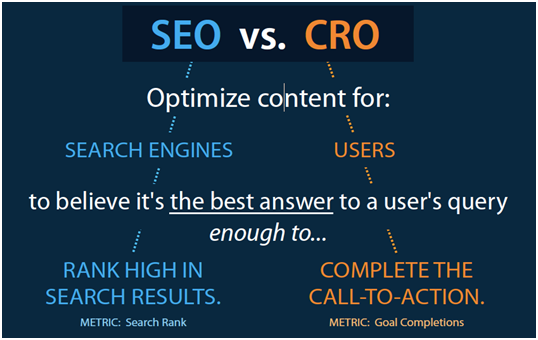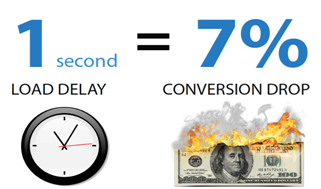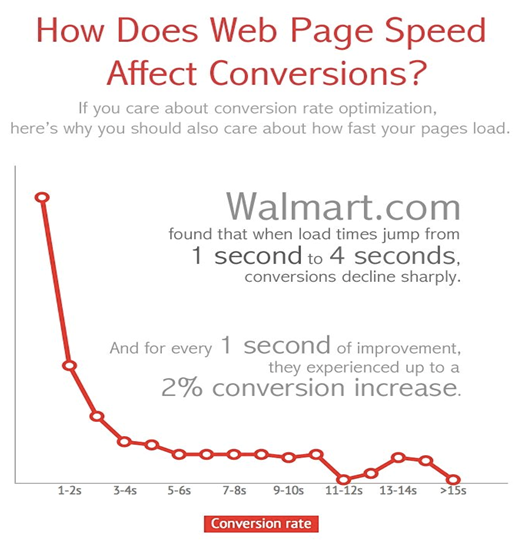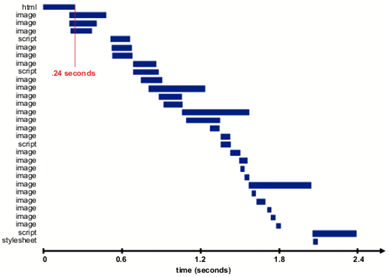Efforts to drive more traffic and rank better on search engines sometimes seem to be in conflict with those for increasing conversion rates for your website. But, as improved user experience becomes a stronger criterion for search engines, search engine optimization and conversion rate optimization are becoming a complementary, multistep process in marketing your business.
Don’t sweat it: Your SEO efforts won’t ruin conversions on your site. And your CRO (conversion rate optimization) strategies won’t harm your findability, either.
When setting your marketing plan, you might want to create different pages for different stages of your conversion funnel. Depending on the strategy you create and your business’s needs, you might find yourself designing SEO-focused pages in relation to CRO-focused pages.
This change in focus means a change in content. You would produce content to get your site found and rank better instead of creating content to convert your visitors into buyers. As each page you create has a goal towards micro or macro conversions, filled by soft CTAs (calls to action) or hard CTAs, you might reasonably start wondering if your SEO-focused content is going to interfere in these conversions.
Putting SEO vs. CRO content doubts aside, remember that the changes in Panda, Penguin and Hummingbird algorithms aim at enhancing users’ experience by better addressing their needs. Google wants to offer users the best results for their queries, so Googlebot will crawl to find information that both matches users’ search (as an SEO-focused page would) and provides an enhanced experience leading to a solution to their problems (as a CRO-focused page would).
As Google’s algorithms focus on predicting and addressing visitors’ behavior online, great opportunities arise to combine SEO and CRO strategies for powerful marketing. Find out the reasons why you should use these two marketing efforts together, along with four strategies you can implement to improve conversions on your website. From getting rid of bulky code to avoiding clock errors, let’s turn your visitors into happy customers.
Why SEO and CRO complement each other so well
Optimizing your content for search engines is different from optimizing your content for conversions, but the results you achieve with one complement the results you reach with the other.
While SEO/SEM helps you bring more traffic to your site, CRO helps you convert these visitors into leads and customers. Just driving more traffic to your site doesn’t guarantee more conversions. A CRO program complements the increase in traffic generated by an SEO program.
SEO is focused on strategies to rank better in search engine results such as link building, internal linking, keyword placement, website structure and so. CRO is focused on strategies to optimize your conversion rates, including qualitative and quantitative research, competitive analysis, testing of on-site elements, post-test analysis and so on.
The main goal of SEO/SEM is to attract visitors to your site. The main goal of CRO is to encourage visitors to take a specific action.
SEO helps your visitor find your website; CRO helps them engage with the site.
Content optimized for search engines is at the heart of SEO programs. Content optimized for users’ experience is at the heart of CRO programs.
SEO focuses on understanding the algorithms of search engines. CRO focuses on understanding users’ behavior. But as Google updates its algorithms to provide the best search experience for the user, UX (user experience) factors have been growing in importance. So when a website optimizes for better page speed, the optimization addresses users’ behavior as well as helps search rankings.
Both SEO and CRO depend on a strong data pool. Decisions made by CRO strategies are also based on data from SEO results, as CRO is heavily data-driven.
Let’s dive into four specific strategies you can implement to combine SEO and CRO.
Strategy 1: Maintain entry page ‘scent’
Maintaining a strong connection between a source ad, or organic search result, and a specific landing page is crucial for conversion. If you click on the ad or result and find yourself somewhere that you do not expect, this is a big problem.
Information “scent” reassures visitors that they are at the right place. Scent affects whether a visitor arrives on your website and soon leaves (bounce rate) or stays around to complete the purchase.
How to optimize your page for scent:
- Match title tag and H1 heading.
- Design a clear site structure.
- Be careful with dynamic search ads for category pages; Google provides instructions here, here, here and here.
- Set local phone numbers based on GeoIP for organic business location, and you can try the new feature of click-to-call in organic results.
- Make sure you exclude out-of-stock products from search results.
- Adjust your layout based on keywords.
Strategy 2: Combine A/B testing with SEO
When done right, split testing can help you capture more leads, get more visitors and increase sales. To set up a safe and effective split test, you need to give Google specific information about your original page.
How can A/B testing work with SEO?
Each user sees different variations of the same page. The page which converts the higher percentage of users is the winner. Googlebot is obviously confused when deciding what page to rank in the SERPs. Which one should it consider: version A as the original page or version B or C?
With SEO A/B testing, there’s another layer of complexity, since two groups of pages aren’t identical. As Will Critchlow points out on Moz:
Rather than simply being able to compare the performance of the two buckets of pages directly, we instead need to forecast the performance of both sets, and determine that an experiment is a success when the control group matches its forecast, and the variant group beats its forecast by a statistically-significant amount.
Critchlow notes that not only does this address the differences between the groups of pages, but it also helps to protect against sitewide effects such as:
- a Google algorithm update.
- seasonality or spikes.
- unrelated changes to the site.
How to perform A/B tests without harming your SEO
Google encourages A/B testing and has said that doing an A/B or multivariate test will have little to no impact on your website’s search rank. But you should:
Avoid cloaking errors
Using an A/B testing platform to change the spirit of the page is a huge mistake. Design, scope and content of your variations should not be significantly different from your original page. Google bots might recognize major changes as cloaking.
Some split-testing tools inadvertently cause such cloaking errors by showing different pages to Google bots and humans. These kinds of tools track the traffic source and show the original version to Google and version B to actual human visitors.
Use the rel=canonical tag
If an A/B test has more than one URL, put the rel=canonical link pointing to your original page on all of your alternate links, directing bots indexing your site to the original page.
Strategy 3: Improve page load time
How long are users willing to wait for a site to load before they abandon the page?
Loading time is a major contributor to abandonment of a page. Up to one-second delays are bearable for users, but a 10-second delay in loading time may make users leave a site immediately. Even if they stay, it’s unlikely they will complete the call to action.
Some statistics about loading problems in web pages:
- 47% of shoppers expect a web page to load in two seconds or less.
- 40% abandon a website that takes more than three seconds to load.
- 79% of online shoppers dissatisfied with website performance are less likely to buy from the same site again.
- 52% of online shoppers state that quick page loading is important to their site loyalty.
How to improve page-loading time
- Use a website speed test tool: Test your website’s page load time on both desktop and mobile devices.
- Evaluate reports: Website speed tools allow you to see not just the front-end elements like page size, load time and download speed, but also back-end elements like HTML, JavaScript and CSS.
- Optimize images: Images can slow down your website considerably. Resize your images using a picture editor tool such as Photoshop and set them to 72 dpi. To further compress the image, use an optimization tool such as JPEG & PNG Stripper, Smush.it, Online Image Optimizer and SuperGIF.
- Get rid of bulky code: Bulky code can create major roadblocks for your site. Remove line breaks and excess spacing.
- Avoid external embedded media: Host all content on your own server.
- Start using a CDN (Content Delivery Network).
- Install Google PageSpeed on your server.
- Minimize round-trip times (RTTs).
- Improve perceived web performance.
Strategy 4: Leverage videos
Explainer videos play an important role in increasing conversion rates. These videos provide businesses an opportunity to clearly convey their value proposition. Explainer videos can also help increase page engagement and time spent on site.
Salesforce, for instance, increased conversion rate by 20 percent after adding an explainer video in 2012. Thirty percent of their website visitors watched the video, and approximately 50 percent of those viewers watched the video in its entirety.
Visitors’ attention span is short. The average duration of a watched video is about 2.7 minutes.
Your hosting must be fast to support the video, and you need strong, captivating content to gain visitors’ attention in a short amount of time.
How to get better results with video SEO optimization:
- Start with the right keywords: Try the AdWords Keyword Tool.
- Upload videos to your own domain: Opening a video channel for your company website on YouTube or Vimeo may seem good to increase subscribers. However, your own domain is crucial. Create a sitemap with key information such as title and category to let Google capture the info.
- Track to view SEO results.
- Interact with the viewer: Add prompts to interact with visitors.
Key takeaways
SEO and CRO can work wonders together. Your site should be easy to find, but it should also provide value to the user, offering useful content that addresses users’ needs.
Using SEO and CRO as a multistep approach can help you rank better in search engines and increase your conversions. Avoid the Googlebot rules that penalize you, and focus on how to use SEO to improve your conversions.
Source: 4 ways you can improve your website conversion rate with SEO
502.822.6695
team@guardianowldigital.com






Recent Comments